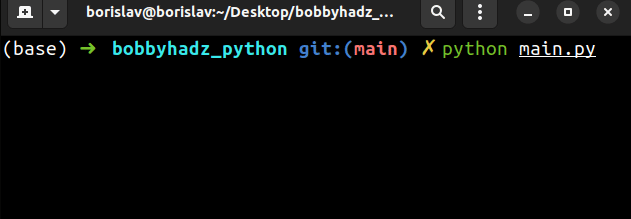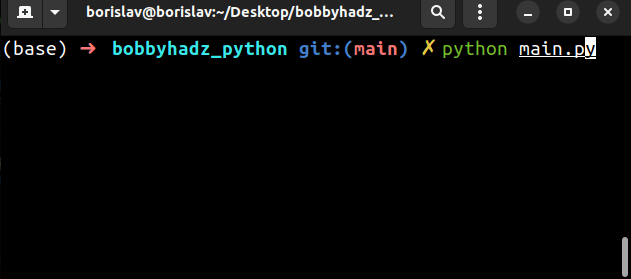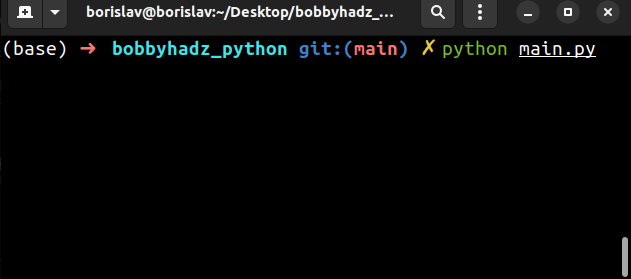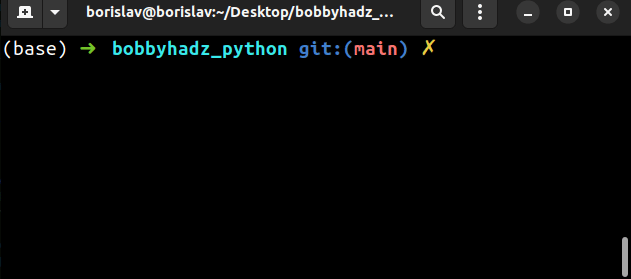TypeError: < not supported between instances of str and int
Last updated: Apr 8, 2024
Reading time·12 min

# Table of Contents
- TypeError: < not supported between instances of STR and INT
- TypeError: < not supported between instances of LIST and INT
- TypeError > not supported between instances of FLOAT and STR
- TypeError > not supported between instances of TUPLE and INT
- '>' not supported between instances of 'METHOD' and 'INT'
Make sure to click on the subheading that covers your error message.
# TypeError: < not supported between instances of str and int
The Python "TypeError: '<' not supported between instances of 'str' and 'int'"
occurs when we use a comparison operator between values of type str and
int.
To solve the error, convert the string to an integer before comparing the values.

# Using a comparison operator between a string and an integer
Here is an example of how the error occurs.
my_str = '10' my_int = 5 # ⛔️ TypeError: '<' not supported between instances of 'str' and 'int' print(my_str < my_int)
We used a comparison operator between values of incompatible types (str and int) which caused the error.
# Convert the string to an integer to solve the error
To solve the error, make sure the values you are comparing are compatible types.
my_str = '10' my_int = 5 # ✅ Convert str to int print(int(my_str) < my_int) # 👉️ False if int(my_str) < my_int: print('my_str < my_int') else: # 👇️ this runs print('my_str >= my_int')
We used the int() class to convert the string to an integer.
You can also use the float() class if you need to convert the string to a floating-point number.
my_str = '5.5' my_int = 5 print(float(my_str) < my_int) # 👉️ False
We used the float() class to convert the string to a floating-point number to
be able to compare it to the integer.
Floats and integers are compatible types, so everything works as expected.
str() class if you meant to compare 2 strings instead of 2 numbers.# The input() function always returns a string
If you use the input() built-in function, all of the values the user enters
get converted to strings (even numeric values).
from_input = input('Enter your fav number: ') print(from_input) # 👉️ 3 print(type(from_input)) # 👉️ <class 'str'> my_int = 5 # ⛔️ TypeError: '<=' not supported between instances of 'str' and 'int' print(from_input <= my_int)

The input function converts the data to a string and returns it.
input().To solve the error, pass the string to the int() (or float()) class.
from_input = input('Enter your fav number: ') print(from_input) # 👉️ 3 print(type(from_input)) # 👉️ <class 'str'> my_int = 5 print(int(from_input) <= my_int) # 👉️ True if int(from_input) <= my_int: print('success')

We converted the string from the input function back to an integer and
compared the two numbers.
You can use a try/except statement if you need to handle the error if the user enters an invalid integer.
try: from_input = input('Enter your fav number: ') print(from_input) # 👉️ "abc" print(type(from_input)) # 👉️ <class 'str'> my_int = 5 print(int(from_input) <= my_int) except ValueError: print('Invalid integer supplied')

# Calling the min() and max() functions with an int and a string
The error also occurs when you call the min() and
max() functions with an
integer and a string.
num_1 = 15 num_2 = '20' # 👈️ Stores a string # ⛔️ TypeError: '<' not supported between instances of 'str' and 'int' print(min([num_1, num_2])) # ⛔️ TypeError: '>' not supported between instances of 'int' and 'str' print(max([num_2, num_1]))
The num_2 variable stores a string, so it can't be compared to an integer.
We can convert the value to an integer to solve the error.
num_1 = 15 num_2 = '20' # 👈️ Stores a string print(min([num_1, int(num_2)])) # 👉️ 15 print(max([int(num_2), num_1])) # 👉️ 20
If you need to convert all values in a list to integers, use a list comprehension.
a_list = ['15', '20', 25, '30'] new_list = [int(x) for x in a_list] print(new_list) # 👉️ [15, 20, 25, 30] print(min(new_list)) # 👉️ 15 print(max(new_list)) # 👉️ 30
List comprehensions are used to perform some operation for every element or select a subset of elements that meet a condition.
On each iteration, we convert the current item to an integer and return the result.
# Checking what type the variable stores
If you aren't sure what type of object a variable stores, use the built-in
type() class.
my_str = '13' print(type(my_str)) # 👉️ <class 'str'> print(isinstance(my_str, str)) # 👉️ True my_int = 5 print(type(my_int)) # 👉️ <class 'int'> print(isinstance(my_int, int)) # 👉️ True
The type class returns the type of an object.
The isinstance() function
returns True if the passed-in object is an instance or a subclass of the
passed-in class.
Values such as floats and integers are compatible and can be compared. However, you can't compare a string to an integer.
The string has to be converted to an integer using the int() class before the
comparison.
- TypeError: < not supported between instances of LIST and INT
- TypeError > not supported between instances of FLOAT and STR
- TypeError > not supported between instances of TUPLE and INT
- '>' not supported between instances of 'METHOD' and 'INT'
# TypeError: < not supported between instances of list and int
The Python "TypeError: '<' not supported between instances of 'list' and
'int'" occurs when we use a comparison operator between values of type list
and int.
To solve the error, access the list at a specific index or compare the list's length to an integer.

Here is an example of how the error occurs.
my_list = [3, 5, 8] my_int = 10 # ⛔️ TypeError: '<' not supported between instances of 'list' and 'int' print(my_list < my_int)
We used a comparison operator between values of incompatible types (list and int) which caused the error.
# Access the list at a specific index and compare the value
One way to solve the error is to access a specific item in the list.
my_list = [3, 5, 8] my_int = 10 print(my_list[0] < my_int) # 👉️ True if my_list[0] < my_int: # 👇️ this runs print('success')
We accessed the list item at index 0 (the first item) and compared it to an
integer.
Python indexes are zero-based, so the first item in a list has an index of 0,
and the last item has an index of -1 or len(a_list) - 1.
my_list = [3, 5, 8] print(my_list[0]) # 👉️ 3 print(my_list[1]) # 👉️ 5 print(my_list[2]) # 👉️ 8
# Make sure the values you are comparing are of compatible types
The values you are comparing have to be of compatible types. If the list
contains numbers wrapped in a string, convert the string to a number using the
int() or float() classes.
my_list = ['3', '5', '8'] my_int = 10 print(int(my_list[0]) < my_int) # 👉️ True
The list stores strings, so we had to use the int() class to convert the
string to an integer before the comparison.
# Filtering the integers in a list based on a comparison
If you meant to filter out integers in a list based on a comparison, use a list comprehension.
my_list = [3, 5, 8, 10, 15] new_list = [x for x in my_list if x > 7] print(new_list) # 👉️ [8, 10, 15]
The example returns a new list that only contains the values that are greater
than 7.
# Comparing the list's length to an integer
If you meant to compare the list's length to an integer, use the len()
function.
my_list = [3, 5, 8] my_int = 10 print(len(my_list) > my_int) # 👉️ False print(len(my_list)) # 👉️ 3 if len(my_list) < my_int: # 👇️ this runs print("The list's length is less than 10")
The len() function returns the length (the number of items) of an object.
The argument the function takes may be a sequence (a string, tuple, list, range or bytes) or a collection (a dictionary, set, or frozen set).
# Comparing the sum of the items in a list to an integer
If you meant to compare the sum of the items in the list to an integer, use the sum() function.
my_list = [3, 5, 8] my_int = 10 print(sum(my_list) > my_int) # 👉️ True print(sum(my_list)) # 👉️ 16 if sum(my_list) > my_int: # 👇️ this runs print('The sum is greater than 10')
The sum function takes an iterable, sums its items from left to right and returns the total.
# Checking what type a variable stores
If you aren't sure what type of object a variable stores, use the built-in
type() class.
my_list = [3, 5, 8] print(type(my_list)) # 👉️ <class 'list'> print(isinstance(my_list, list)) # 👉️ True my_int = 10 print(type(my_int)) # 👉️ <class 'int'> print(isinstance(my_int, int)) # 👉️ True
The type class returns the type of an object.
The isinstance() function
returns True if the passed-in object is an instance or a subclass of the
passed-in class.
- TypeError > not supported between instances of FLOAT and STR
- TypeError > not supported between instances of TUPLE and INT
- '>' not supported between instances of 'METHOD' and 'INT'
# TypeError > not supported between instances of float and str
The Python "TypeError: '>' not supported between instances of 'float' and
'str'" occurs when we use a comparison operator between values of type float
and str.
To solve the error, convert the string to a float before comparing the values.

Here is an example of how the error occurs.
my_float = 1.1 my_str = '2.2' # ⛔️ TypeError: '>' not supported between instances of 'float' and 'str' print(my_float > my_str)
We used a comparison operator between values of incompatible types (float and str) which caused the error.
# Convert the string to a float to solve the error
To solve the error, make sure the values you are comparing are of compatible types.
my_float = 1.1 my_str = '2.2' # ✅ convert str to float print(my_float > float(my_str)) # 👉️ False if my_float > float(my_str): print('true') else: # 👇️ this runs print('false')
We used the float() class to convert the string to a floating-point number.
You can also use the int() class if you need to convert the string to an
integer.
str() class if you meant to compare 2 strings instead of 2 numbers.# Solve the error when using pandas
If you use pandas, make sure to cast the items in the column to floats.
import pandas as pd d = {'col1': ['1.1', '2.2'], 'col2': ['3.3', '4.4']} df = pd.DataFrame(data=d) # ✅ cast items to float df['col1'] = df['col1'].astype(float) print(3.14 > df['col1'][0]) # 👉️ True
You can also use the str() class instead of float if you meant to compare 2
strings.
# The input() function always returns a string value
Note that the input() built-in function returns a string even if the user
provides a floating-point number.
my_float = 1.1 from_input = input('Enter your fav number: ') print(from_input) # 👉️ 2.2 print(type(from_input)) # 👉️ <class 'str'> # ⛔️ TypeError: '<' not supported between instances of 'float' and 'str' print(my_float < from_input)

The input function converts the data to a string and returns it.
input().To solve the error, pass the string to the float() (or int()) class.
my_float = 1.1 from_input = input('Enter your fav number: ') print(from_input) # 👉️ 2.2 print(type(from_input)) # 👉️ <class 'str'> print(my_float < float(from_input)) # 👉️ True

We converted the string from the input function back to a float and compared
the two numbers.
You can use a try/except statement if you need to handle the error if the user
enters an invalid float.
my_float = 1.1 try: from_input = input('Enter your fav number: ') print(from_input) # 👉️ abc print(type(from_input)) # 👉️ <class 'str'> print(my_float < float(from_input)) except ValueError: # 👇️ this runs print('Invalid float supplied')

# Calling the min() and max() functions with a float and a string
The error also occurs when you call the min() and max() functions with a
float and a string.
num_1 = 1.1 num_2 = '2.2' # 👈️ stores a string # ⛔️ TypeError: '<' not supported between instances of 'str' and 'float' print(min([num_1, num_2])) # ⛔️ TypeError: '>' not supported between instances of 'float' and 'str' print(max([num_2, num_1]))
The num_2 variable stores a string, so it can't be compared to a
floating-point number.
We can convert the value to a float to solve the error.
num_1 = 1.1 num_2 = '2.2' # 👈️ stores a string print(min([num_1, float(num_2)])) # 👉️ 1.1 print(max([float(num_2), num_1])) # 👉️ 2.2
If you need to convert all values in a list to floating-point numbers, use a list comprehension.
a_list = ['1.1', '2.2', 3.3, '4.4'] new_list = [float(x) for x in a_list] print(new_list) # 👉️ [1.1, 2.2, 3.3, 4.4] print(min(new_list)) # 👉️ 1.1 print(max(new_list)) # 👉️ 4.4
List comprehensions are used to perform some operation for every element or select a subset of elements that meet a condition.
On each iteration, we convert the current item to a float and return the result.
# Checking what type a variable stores
If you aren't sure what type of object a variable stores, use the built-in
type() class.
my_float = 1.1 print(type(my_float)) # 👉️ <class 'float'> print(isinstance(my_float, float)) # 👉️ True my_str = '3.14' print(type(my_str)) # 👉️ <class 'str'> print(isinstance(my_str, str)) # 👉️ True
The type class returns the type of an object.
The isinstance() function
returns True if the passed-in object is an instance or a subclass of the
passed-in class.
- TypeError > not supported between instances of TUPLE and INT
- '>' not supported between instances of 'METHOD' and 'INT'
# TypeError > not supported between instances of tuple and int
The Python "TypeError: '>' not supported between instances of 'tuple' and
'int'" occurs when we use a comparison operator between values of type tuple
and int.
To solve the error, access the tuple at a specific index or compare the tuple's length to an integer.

Here is an example of how the error occurs.
my_tuple = 2, 4, 6 my_int = 5 # ⛔️ TypeError: '>' not supported between instances of 'tuple' and 'int' print(my_tuple > my_int)
We used a comparison operator between values of incompatible types (tuple and int) which caused the error.
To solve the error, make sure the values you are comparing are of compatible types before the comparison.
# Accessing the tuple at a specific index
One way to solve the error is to access a specific item in the tuple.
my_tuple = 2, 4, 6 my_int = 5 print(my_tuple[0] > my_int) # 👉️ False if my_tuple[0] > my_int: print('yes') else: # 👇️ this runs print('no')
We accessed the tuple item at index 0 (the first item) and compared it to an
integer.
Python indexes are zero-based, so the first item in a tuple has an index of 0,
and the last item has an index of -1 or len(my_tuple) - 1.
If the values in your tuple are of type string, use the int() class to convert
them to an integer before the comparison.
my_tuple = ('2', '4', '6') my_int = 5 print(int(my_tuple[0]) > my_int) # 👉️ False if int(my_tuple[0]) > my_int: print('yes') else: # 👇️ this runs print('no')
int() or float() classes.# Filtering a tuple based on a comparison
If you meant to filter out integers in a tuple based on a comparison, use a list comprehension.
my_tuple = 2, 4, 6, 8 my_int = 5 new_tuple = tuple([x for x in my_tuple if x > my_int]) print(new_tuple) # 👉️ (6, 8)
The example returns a tuple that only contains the elements that are greater than 5.
# Comparing a tuple's length to an integer
If you meant to compare the tuple's length to an integer, use the len()
function.
my_tuple = 2, 4, 6, 8 my_int = 5 print(len(my_tuple) > my_int) # 👉️ False print(len(my_tuple)) # 👉️ 4
The len() function returns the length (the number of items) of an object.
The argument the function takes may be a sequence (a string, tuple, list, range or bytes) or a collection (a dictionary, set, or frozen set).
# How tuples are constructed in Python
In case you declared a tuple by mistake, tuples are constructed in multiple ways:
- Using a pair of parentheses
()creates an empty tuple - Using a trailing comma -
a,or(a,) - Separating items with commas -
a, bor(a, b) - Using the
tuple()constructor
# Compare the sum of the tuple to an integer
If you meant to compare the sum of the items in the tuple to an integer, use the
sum() function.
my_tuple = 2, 4, 6, 8 my_int = 5 print(sum(my_tuple) > my_int) # 👉️ True print(sum(my_tuple)) # 👉️ 20
The sum function takes an iterable, sums its items from left to right and
returns the total.
# Printing the type of a variable
If you aren't sure what type of object a variable stores, use the built-in
type() class.
my_tuple = 2, 4, 6, 8 print(type(my_tuple)) # 👉️ <class 'tuple'> print(isinstance(my_tuple, tuple)) # 👉️ True my_int = 5 print(type(my_int)) # 👉️ <class 'int'> print(isinstance(my_int, int)) # 👉️ True
The type class returns the type of an object.
The isinstance function returns
True if the passed-in object is an instance or a subclass of the passed-in
class.
# '>' not supported between instances of 'method' and 'int'
The Python "TypeError: '>' not supported between instances of 'method' and 'int'" occurs when we use a comparison operator between a method and an integer.
To solve the error, make sure to call the method with parentheses, e.g.
my_method().

Here is an example of how the error occurs.
class Employee(): def get_salary(self): return 100 emp1 = Employee() my_int = 10 # ⛔️ TypeError: '>' not supported between instances of 'method' and 'int' print(emp1.get_salary > my_int) # 👈️ forgot to call method
emp.get_salary(), so our code actually tries to compare a method and an integer.# Call the method to solve the error
To solve the error, make sure to call the method.
class Employee(): def get_salary(self): return 100 emp1 = Employee() my_int = 10 print(emp1.get_salary() > my_int) # 👉️ True
We used parentheses to invoke the method, so now we compare the return value of the method with an integer.
emp1.get_salary(10, 20).class Employee(): def get_salary(self, num): return 100 * num emp1 = Employee() my_int = 10 print(emp1.get_salary(2) > my_int) # 👉️ True print(emp1.get_salary(2)) # 👉️ 200
We passed an argument in the call to the method
You might also get the error "TypeError: '>' not supported between instances of 'function' and 'int'".
Here is an example of how the error occurs.
def get_num(): return 50 my_int = 10 # ⛔️ TypeError: '>' not supported between instances of 'function' and 'int' print(get_num > my_int) # 👈️ forgot to call method

We forgot to call the get_num function with parentheses.
To solve the error, make sure to call the function.
def get_num(num): return 50 * num my_int = 10 print(get_num(5) > my_int) # 👉️ True print(get_num(5)) # 👉️ 250
We used parentheses to invoke the function, so now we compare the return value of the function with an integer.
If your function takes arguments, make sure to supply them.

